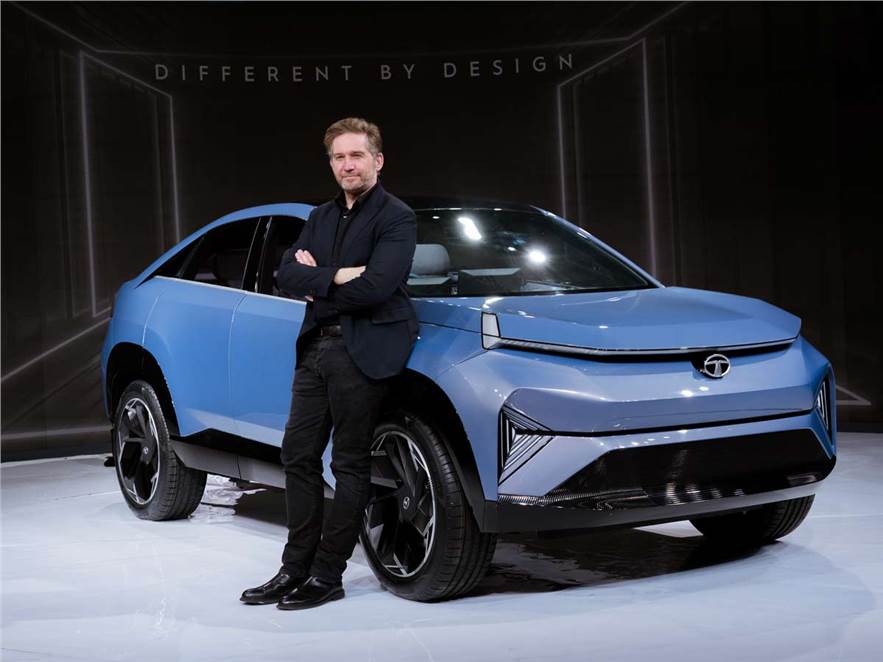AI (Artificial Intelligence) has permeated into our work and life faster than anticipated. Automotive design is typically one of the first to adopt new and cutting-edge tech, so it was only prudent to speak to one of the most prolific automotive designers of the country. Mr. Martin Uhlarik, Head of Global Design at Tata Motors takes us through his interpretation of the tech that could change the face of earth. Or well, at least of Tata Motors….
I Made This
Creating stunning designs with a human touch - Mr. Martin Uhlarik

3. What new skills will automotive designers need to learn as AI becomes more advanced?
The key to successfully integrating AI-driven technology into vehicle design is to become proficient in AI integration. Furthermore, in order to improve safety features and optimise autonomous driving systems, a solid understanding of machine learning principles will be required. It will be essential to have data analysis and interpretation skills to comprehend AI-generated insights to produce user-centric designs. The breadth and depth of responsibilities for vehicle design have also increased as a result of production technologies and digitization. The ability to be creatively inclined and to constantly look for inspiration around them is the most essential trait that designers must possess. This would ensure compelling, user-friendly, and technologically advanced vehicles by balancing AI's capabilities with emotional and aesthetic factors.
4. How might AI change the role of human designers in the automotive industry?
The ongoing development of AI technology will undoubtedly be crucial to the evolution of car design. Instead of spending hours sketching out their designs, designers will have more time today to improve them. Saving time, effort, and money will be possible with the ability to conceptualise potential designs beforehand and produce lifelike renderings. It's crucial to remember that artificial intelligence is a young technology with a tonne of potential. It will undoubtedly open the door to levels of specialisation that are not currently anticipated. There are currently tools that convert straightforward gestures and words into compelling shapes and stirring images. The rapid advancement in technology would eventually lead to the production of animated sculptures that are developed from the thoughts and emotions of humans.
5. What kind of computational resources do you think will be required for AI to design cars that meet all safety and legal requirements?
The laws of physics and actual safety and legal requirements are just a few of the many laws that must be followed during the design process. Other essential considerations include those relating to cost, manufacturing, and the readiness of certain emerging technologies to scale. A modern algorithm or artificial intelligence (A.I.) could quickly assess the viability of one's ideas and concentrate on the result by making use of vast amounts of historical data and physical constraints. Through a number of predetermined parameters, it will also be possible to receive immediate feedback on consumer preferences and market trends. Designers will be empowered and freed to concentrate on the pure expression of their imagination and vision as a result of all of these factors.
6. Do you think neural networks will be the primary tool used for AI-assisted automotive design, or might other algorithms play a role?
Regenerative design already combines neural networks and other algorithms and keeps evolving. As a never-ending pursuit, design can harness machine learning and an enormous amount of historical data as exponential partners. By fusing engineering and art, design has the power to give inanimate objects life. Designing with a data-centric, logical, and rational mindset while incorporating human-like emotions will only improve the overall process and the resultant products. A variety of algorithms with different strengths will likely be used in the future of AI-assisted automotive design to produce safe, effective, and innovative vehicles for groundbreaking advancements in the automotive industry.
7. What do you think are the biggest challenges facing the development of AI that can design vehicles?
The biggest challenge that artificial intelligence development faces is that it lacks the capability for original thought. Humans are fortunate to possess this quality. Designers therefore have the opportunity to concentrate on their own distinctive viewpoint and artistic intuition, allowing AI to support the development of their ideas rather than completely replacing them. They can harness the power of technology while preserving their individuality in the design process by embracing the collaboration between human creativity and AI capabilities.
.jpg&w=35&h=35&q=70&c=1)